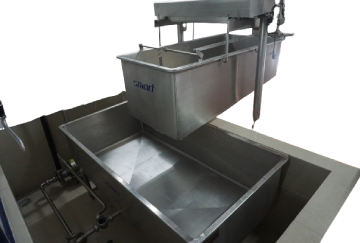MILK RECEPTION EQUIPMENT
Welcome to the world of Dairy Equipment SMART ENGINEERING, we are your trusted partner in providing innovative solutions for Dairy Industries. Milk Reception Equipment refers to the machineries used in the process of receiving and handling milk at milk processing facility. The goal of milk reception is to collect raw milk from farmers or other sources, test and analyze its quality, and then store it until further processing.

Here is some common Milk Reception Equipment:
Milk Receiving Platform : This is the area where milk is initially received at the processing plant. It may include ramps or platforms for unloading milk from tank trucks.
Milk Receiving Tanks (Dump Tanks) : These are large storage tanks where the raw milk is temporarily held after it is received. The tanks are usually insulated to maintain the milk's temperature.
Milk Analyzers : These machines are used to analyze the composition of the milk, including fat content, protein content, and other components. This information is crucial for quality control and processing decisions.
Milk Weighing Systems : Weighing systems ensure that the correct quantity of milk is processed and that farmers are paid fairly for their deliveries.
Milk Filters: These are used to remove impurities and foreign particles from the raw milk, ensuring that it meets quality standards before further processing.
Pumps and Pipelines: Milk is transported within the processing plant using pumps and pipelines. These systems help in transferring milk from the reception area to storage tanks or other processing units.
Milk Chillers: Its a single section plate heat exchanger used for chilling the Milk from 35 deg.c.to3 deg.c. by means of chilled
Refrigeration Systems (IBT): Milk reception areas often have refrigeration systems to maintain the milk at a low temperature, preventing bacterial growth and maintaining freshness.
Cleaning-in-Place (CIP) Systems : These systems are used to clean the MILK RECEPTION EQUIPMENT thoroughly. Proper sanitation is critical in the dairy industry to prevent contamination and ensure the quality of the final dairy products.